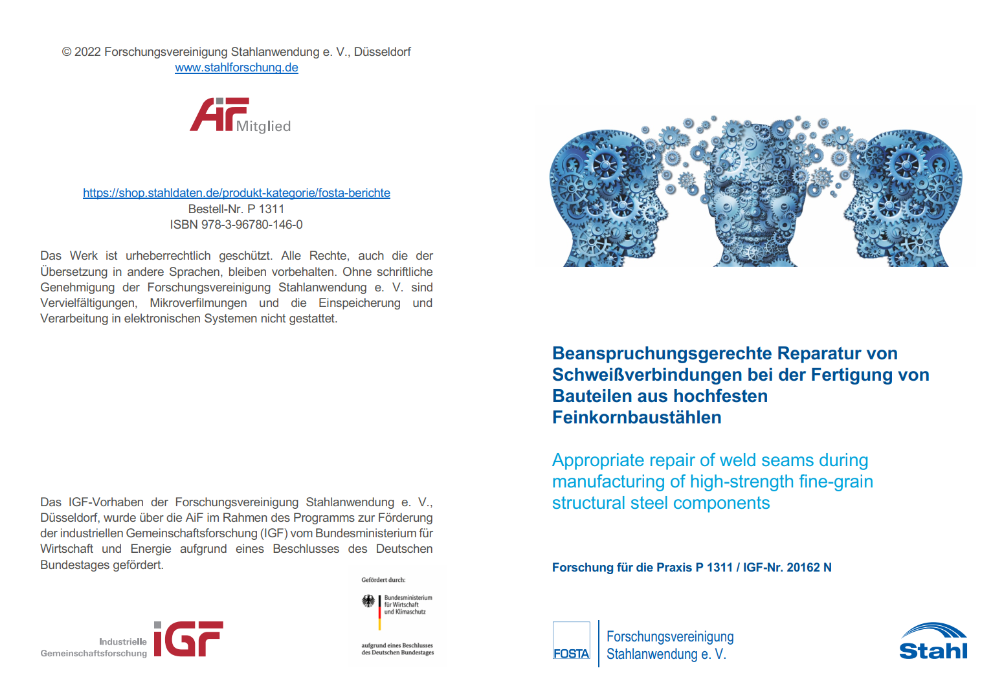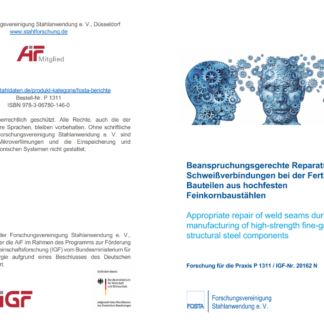Description
P 1311 – Appropriate repair of weld seams during manufacturing of high-strength fine-grain structural steel components
During the assembly of steel structures, unacceptable irregularities are occasionally detected in the welding area despite the fact that welding is carried out in accordance with the specifications. The processing guidelines recommend local thermal gouging of affected areas and re-welding. These guidelines hardly provide any information regarding adequate repair concepts, since almost no evidence-based data is available. This applies in particular to the consideration and optimisation of resulting welding-related stresses due to high shrinkage restraints of the gouging grooves as well as the structural degradation of adjacent areas due to gouging and re-welding. Especially in the case of high-strength steel grades, this often results in reduced mechanical properties and additional welding-related stresses as well as reappearing seam defects.
Therefore, systematic component-relevant investigations of the welding-related stresses and microstructural alterations of repair welded seams were carried out for the research project depending on the shrinkage restraint and heat control during welding and gouging as well as on the number of repair cycles. The results of the investigation show which factors are suitable for stress reduction even at high restraint conditions and how a degradation of the microstructure and the properties of the weld as well as repeated weld defects in the repaired weld can be avoided. In particular, adaptive heat control can be used to reduce welding-related stresses in the repair welds. Component tests also ensure the transferability of the welding experiments into practice.
Based on the findings, recommendations for repair concepts appropriate to the stresses and materials could be derived and stated. The analyses were carried out on the high-strength steel grades S500MLO for the offshore sector and S960QL for mobile crane construction. In particular, this takes into account the economic production and highly efficient designs for wind turbines and high-strength structures that are necessary for their erection.
The research results thus provide an essential basis for the further development of corresponding standards and regulations. This can ultimately prevent damage and usually expensive reworking and achieve improved utilisation of the high strength potential of high-strength steels. With a view to the costs of production, welding work and materials, SMEs in particular can also benefit from the findings in the use of high-strength steels, which are necessary for the efficient realisation of the energy transition in Germany.
All research reports in german language only!
Published in:
July 2022
Authors:
M. Sc. A. Becker, Dr.-Ing. D. Schröpfer, Univ.-Prof. Dr.-Ing. habil T. Kannengießer


